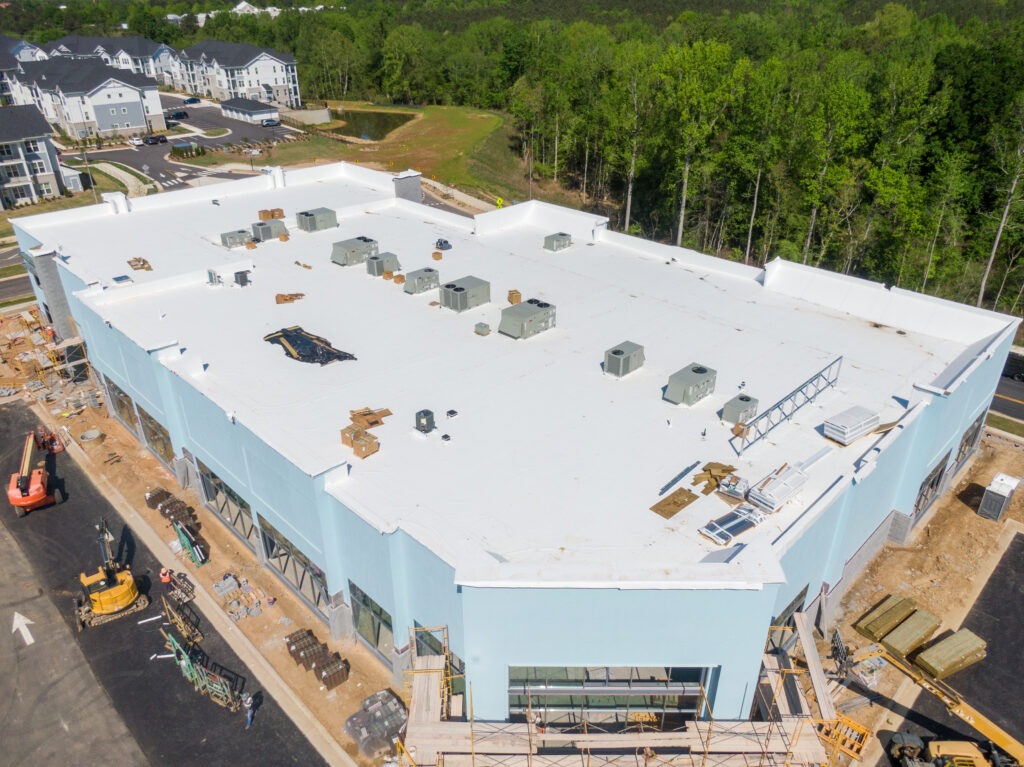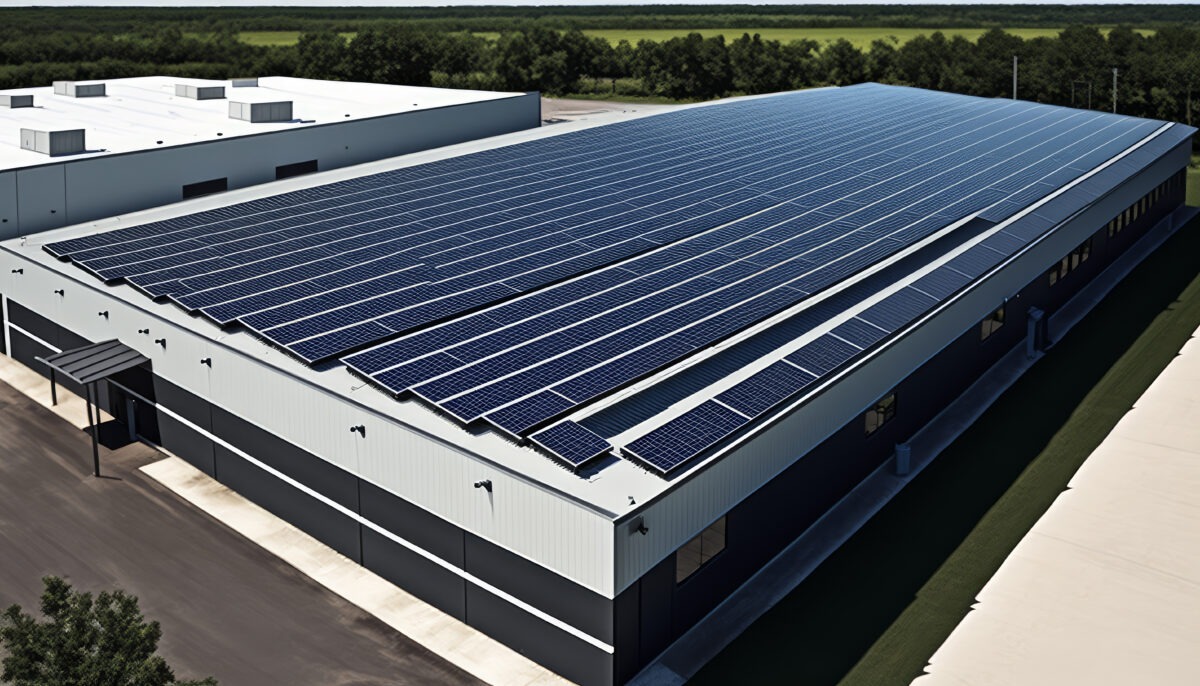The 7 Types of Commercial Roofs Explained
Choosing the right roof for a commercial building plays a major role in how well the structure performs and how long it lasts. Different commercial roofing types offer varying degrees of protection, energy efficiency, and maintenance needs. Missouri’s hot, humid summers, heavy storms, and cold winters make roofing material choices even more important. Here’s a breakdown of the seven most common commercial roofing types, as well as their strengths and weaknesses.
Single-Ply Membrane Roofing

Single-ply membrane roofing is one of the most widely used commercial roofing types in Missouri. It consists of flexible sheets of synthetic material designed to be installed in a single layer. The three main types include TPO (Thermoplastic Polyolefin), PVC (Polyvinyl Chloride), and EPDM (Ethylene Propylene Diene Monomer). TPO is valued for its reflective surface that improves energy efficiency by deflecting heat away from the building, making it ideal for Missouri’s warm, sunny months. PVC shares similar heat-reflective benefits but also performs well in environments with exposure to oils or chemicals, making it suitable for restaurants and industrial buildings. EPDM, often called a “rubber roof,” handles extreme temperature shifts and is a strong choice for durability during Missouri’s winter freeze-thaw cycles.
Pros and Cons
Each of these single-ply options is lightweight, quick to install, and flexible enough to accommodate building movement. TPO and PVC stand out for energy efficiency, while EPDM holds strong in colder climates. However, all three can be vulnerable to punctures from debris or heavy foot traffic. Seam failures may also occur if installation isn’t done properly, so working with a professional team is essential.
Built-Up Roofing (BUR)
Built-up roofing, or BUR, is one of the oldest commercial roofing systems still in use. It’s constructed from multiple layers of bitumen (asphalt or tar) and reinforcing fabrics, topped with gravel to protect against UV rays and provide a finished look. BUR works particularly well for flat or low-slope roofs that require excellent waterproofing and long-term durability.
Pros and Cons
BUR’s strength lies in its multi-layer protection, which provides strong resistance to water and weather. In a state like Missouri, where heavy rain and hailstorms are common, this layered system can help prevent leaks and damage. However, built-up roofing is heavier than other options and requires a solid structural foundation. Installation can take longer due to the multiple steps involved, and odor from hot tar application may be an issue during the process.
Modified Bitumen Roofing
Modified bitumen roofing is an evolution of the BUR system, made by adding polymer-modified asphalt to improve flexibility and temperature resistance. These roofs are installed in sheets that can be torch-applied, cold-applied, or self-adhered. Modified bitumen is particularly beneficial in regions with extreme seasonal temperature changes like Missouri, as it expands and contracts with the weather without cracking.
Pros and Cons
This system holds up well to foot traffic, making it a smart choice for rooftops that support HVAC units or require regular maintenance access. Repairs are relatively easy and can be completed without replacing the entire roof. One potential downside is that without a UV-resistant cap sheet or coating, modified bitumen can degrade from sun exposure. Also, certain installation methods involve open flames, requiring safety precautions and experienced installers.
Metal Roofing

Metal roofing is a durable and long-lasting option, especially popular in Missouri’s rural areas and on commercial buildings with pitched roofs. Common materials include galvanized steel, aluminum, and sometimes copper for premium projects. Metal roofs are known for their ability to withstand high winds, snow loads, and temperature swings, all of which make them ideal for Missouri’s varied climate.
Pros and Cons
The biggest draw of metal roofing is its longevity and many systems last 40 years or more with proper maintenance. They also reflect sunlight, which helps reduce cooling costs during Missouri summers. However, the initial installation cost tends to be higher than other materials, and without sound insulation, they can be noisy during rainstorms or hail events. Maintenance generally involves periodic inspections and sealant checks, especially around flashing and fasteners.
Spray Polyurethane Foam (SPF) Roofing
Spray polyurethane foam roofing, or SPF, is a seamless roofing system applied as a liquid that expands into a foam and hardens into a solid surface. SPF provides excellent insulation and creates a barrier that prevents air and water infiltration. Because it adheres directly to the existing roof, it works well for retrofit applications and buildings with irregular shapes.
Pros and Cons
SPF is energy-efficient due to its high R-value and reduces heating and cooling costs year-round. It’s also lightweight and adaptable to most existing roofs. One limitation is that SPF requires dry, mild weather for installation, conditions that Missouri can’t always guarantee, especially in spring and fall. Maintenance includes regular inspections to ensure the protective coating remains intact, usually requiring reapplication every 10 to 15 years.
Asphalt Shingles
Asphalt shingles, though commonly associated with homes, also appear on smaller commercial buildings with sloped roofs. They are budget-friendly, easy to install, and come in a wide range of styles and colors, making them a flexible choice for visually conscious businesses.
Pros and Cons
Asphalt shingles are an affordable choice for smaller offices or shops but tend to have a shorter lifespan than commercial-grade materials. They can be damaged by high winds or hail and don’t offer the same level of energy efficiency as metal or TPO systems. Still, for businesses with a tight budget or buildings that don’t require flat roofing, asphalt remains a solid option.
Green Roofing
Green roofs are growing in popularity in urban commercial areas. These systems include a layer of vegetation planted over a waterproof membrane. They are most often seen on flat roofs and can serve both functional and aesthetic purposes. A green roof offers added insulation, stormwater control, and even improved air quality.
Pros and Cons
Green roofs thrive when properly maintained, but they do require routine care, including irrigation and occasional replanting. Not every structure can support the weight of a green roof, so additional engineering might be needed. In Missouri, where summer heat and humidity can stress some plant varieties, it’s important to choose regional plant species and work with an expert on system design.
Get Your Commercial Roof Project Started
If you’re planning a commercial roof replacement or installation, it’s worth speaking with a roofing contractor who understands Missouri’s weather and building codes. Manor Roofing offers expert commercial roofing services tailored to Columbia and surrounding areas. Let’s talk about your project and help you pick the roofing system that gives your building the protection, efficiency, and durability it needs. Reach out today to schedule your free estimate and get started.

